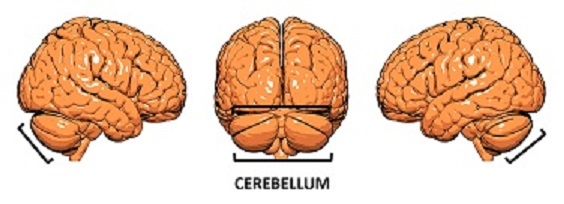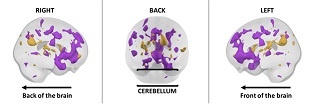Category menu
Research findings about the role of the cerebellum in Tourette Syndrome
Posted on 6 April 2020
Thank you to everyone who took part in the research study led by Hilmar Sigurdsson: "Alterations in cerebellar grey matter structure and covariance networks in young people with Tourette Syndrome"
Researchers have known for a long time that the cerebellum is important when we want to control our movements. For example, when we walk or when we decide to reach for a glass of water sitting on the table. The cerebellum does not command start of movements, however. Rather the cerebellum sends signals to areas of the brain that do. The cerebellum could therefore be an important area involved in Tourette syndrome.
People with Tourette syndrome often comment that they don’t always feel they are in control of their movements. Based on this information, researchers have hypothesized that the cerebellum might be involved in tics and the urge-to-tic. The cerebellum might play a role by sending signals to areas of the brain which starts a chain of signals resulting in tics. In the first figure below, we see the cerebellum from all angles (right, back and left). The cerebellum is a very small area hanging just below the cortex. Although it is small – it only occupies about 10% of the total brain volume – it is an important area of the brain with connections to the motor and sensory regions. The cerebellum has also strong connections with a group of areas in the middle of the brain called the ‘basal ganglia’. Hyper-activity of these ‘basal ganglia’ areas is thought to be the driver of tics.

Figure 1. The cerebellum seen from right, back and left of the brain.
In one of our recent studies we wanted to have a closer look at the cerebellum and its relationship with the rest of the brain. A total of 28 young people with Tourette syndrome completed their MRI brain scans with the research team at the University of Nottingham. In addition, 36 young people without Tourette syndrome who were of same age and gender also completed MRI brain scanning. First, we calculated the volume of the cerebellum in participants. This is measured in milliliters, same as when we measure any amount of water for example. We found very little difference in volume between the two groups. This tells us that the size of cerebellum in Tourette syndrome is the same as in those who do not have Tourette syndrome. We then looked at the relationship between this volume of the cerebellum and the rest of the brain. To do this we use ‘correlation’ which is a measure of the strength of a relationship between two areas. Our investigation showed for the first time that this relationship is somewhat different in Tourette syndrome. Specifically, young people with Tourette syndrome have stronger relationship between cerebellum and areas at the front and in the middle of the brain. Also, we found weaker relationship between the cerebellum and areas at the back of the brain. One those areas is called the ‘precuneus’ (and showed less relationship with the cerebellum in Tourette syndrome), and we thought this was very interesting. This area is thought to play a role in ‘agency’, which is the feeling we get when we sense that we are in control of our own actions and their consequences.

Figure 2. Connections between cerebellum and front of the brain that are stronger in Tourette syndrome (purple) and back of the brain that are weaker in Tourette syndrome (yellow).
Most importantly, this study shows us that it is important to investigate the cerebellum more in people with Tourette syndrome. Especially, we think this provides a strong support for our ideas that the cerebellum might be involved in the chain reactions of brain activity which results in the occurrence of tics. We would like to thank all the young people and their parents for taking part in our studies. We would also like to thank Tourette’s Action for their tireless support.
The research study I have described has been published recently in the Journal Cortex as part of the Special issue “The Neuropsychology of Unwanted Thoughts and Actions”. The article can be downloaded for free here: https://www.sciencedirect.com/science/article/pii/S0010945220300137


